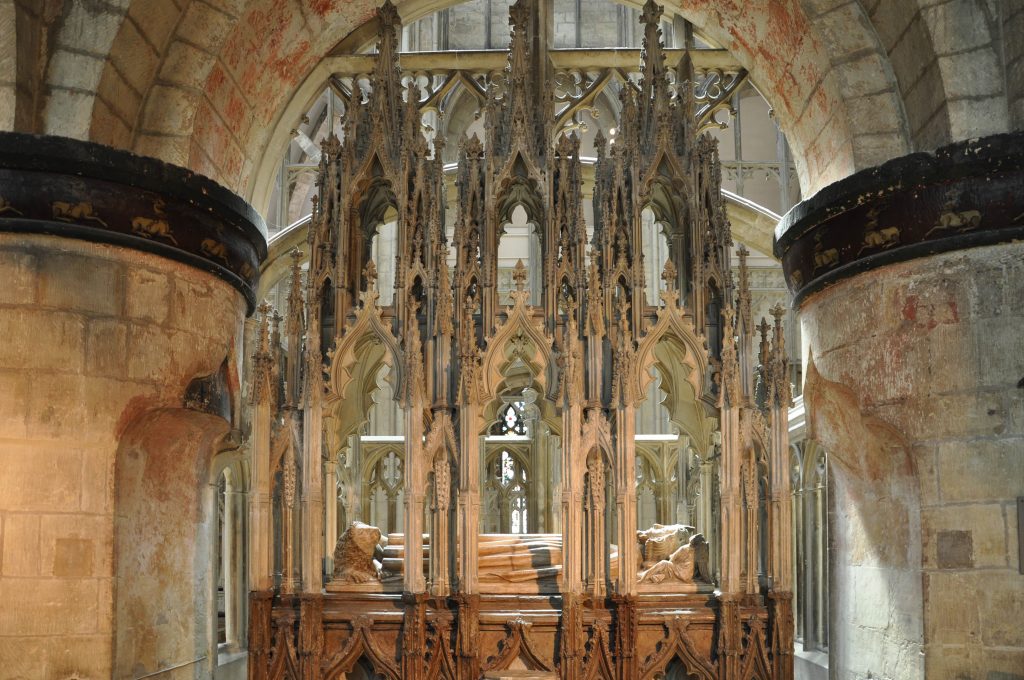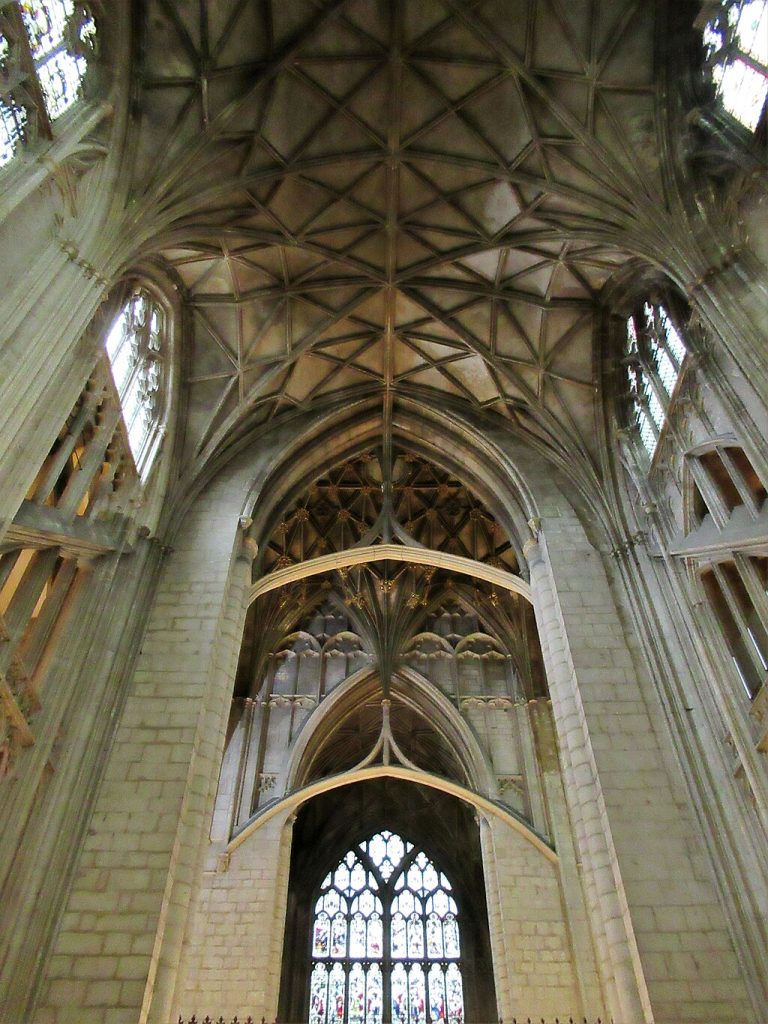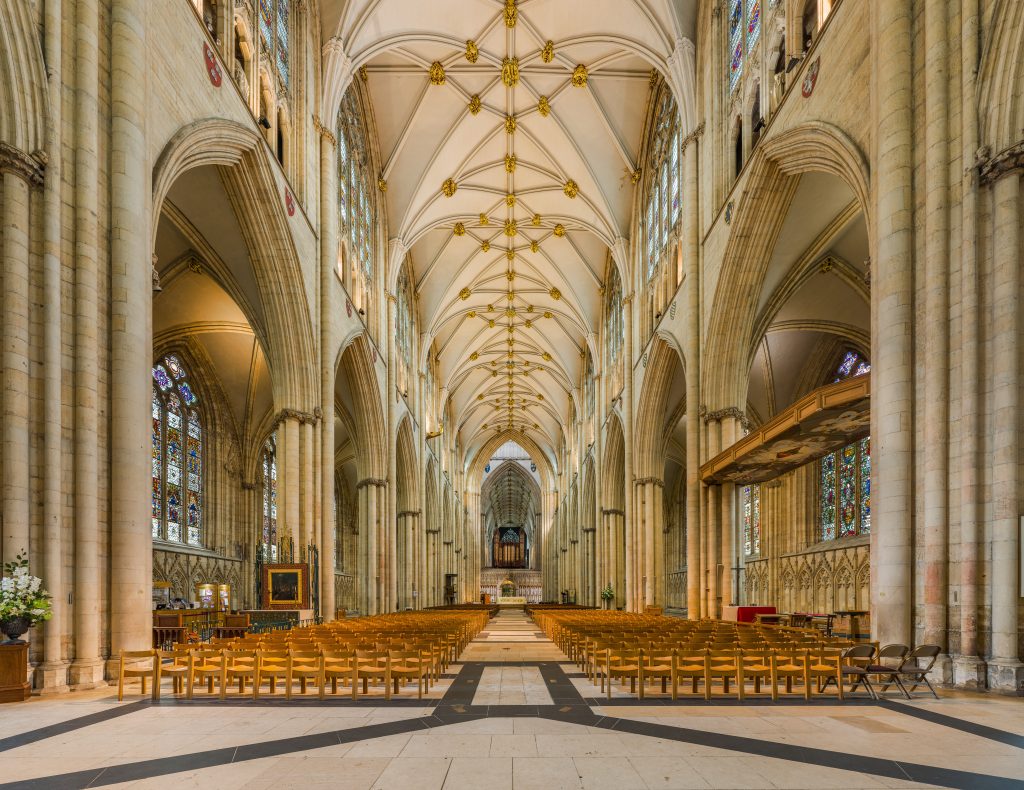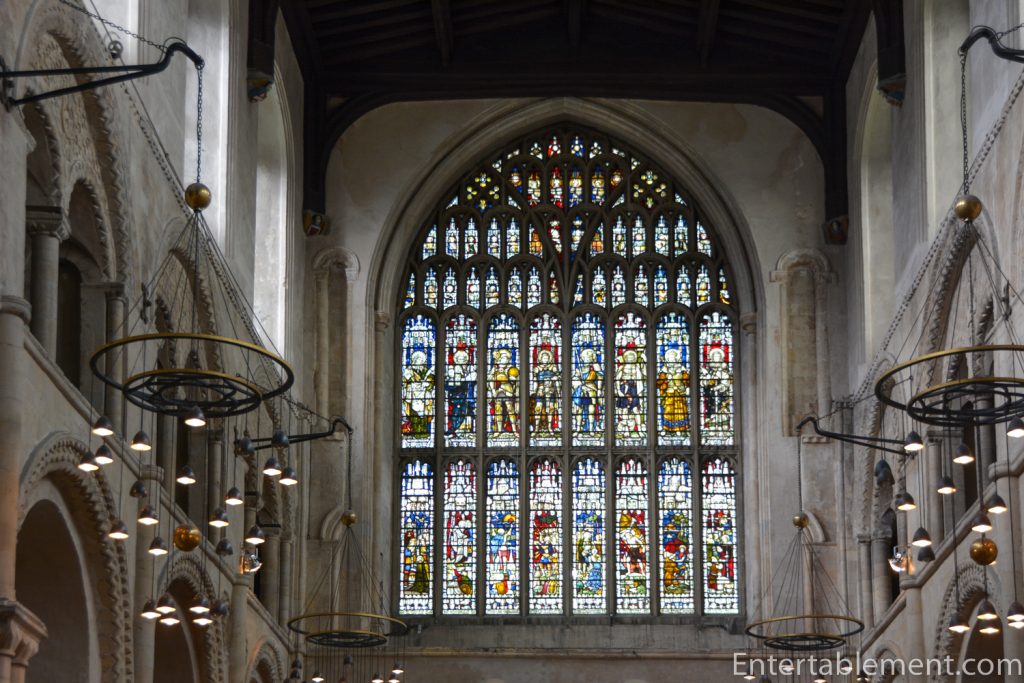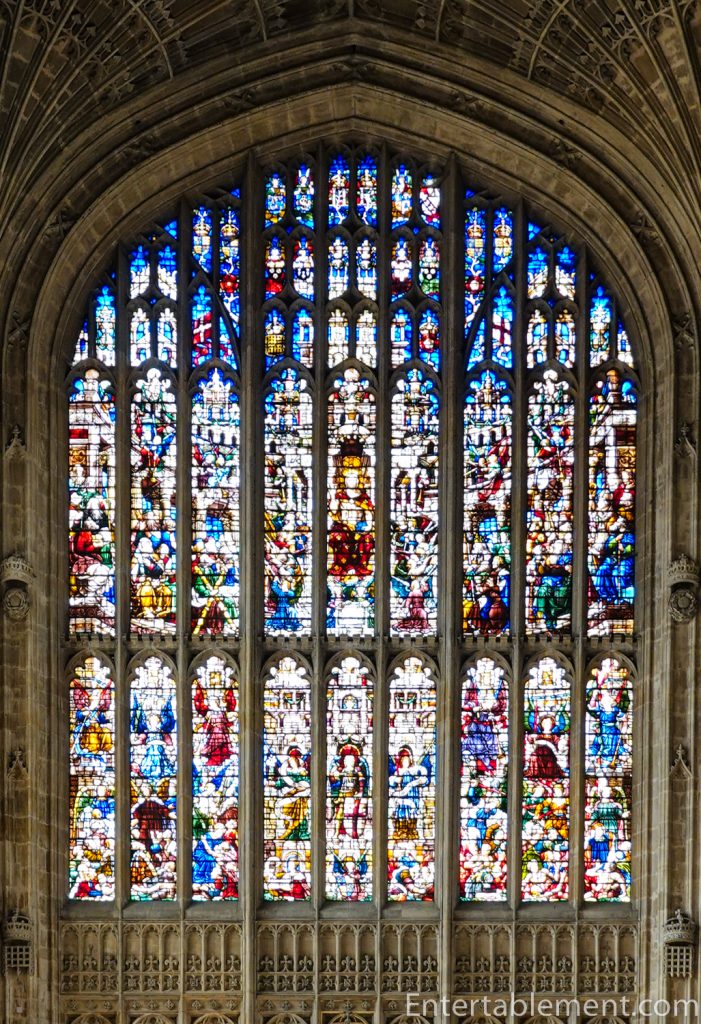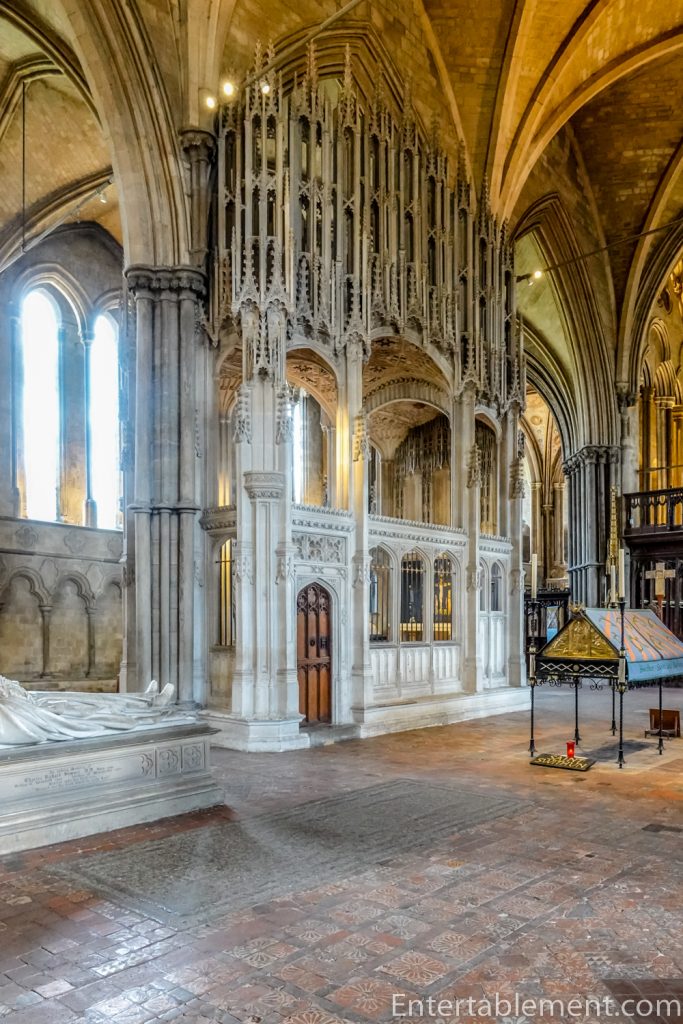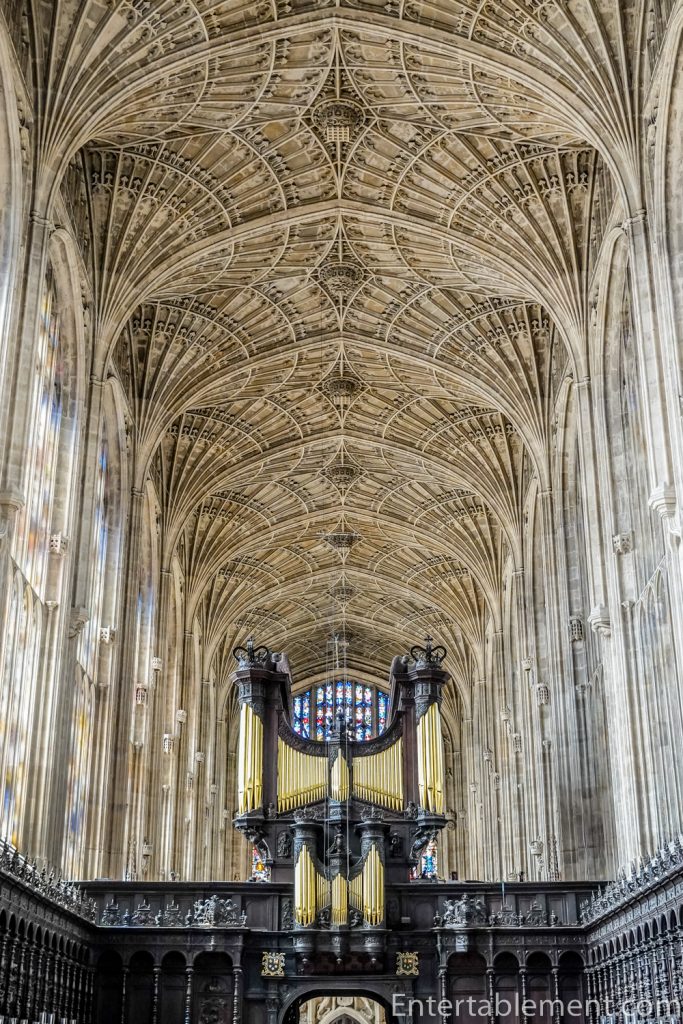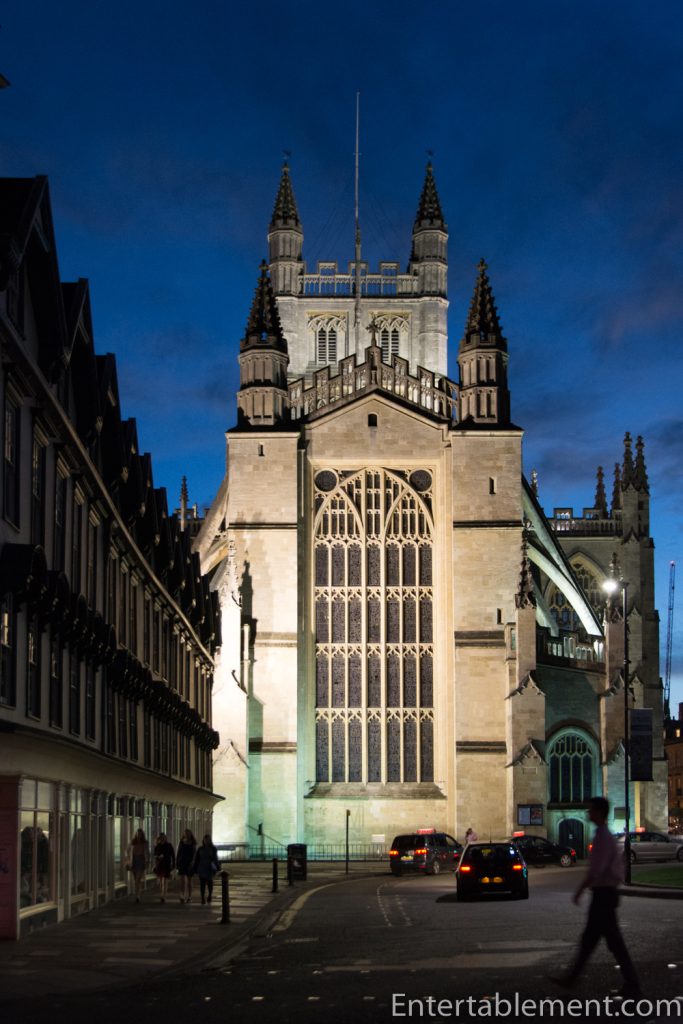Previous Post in the series: Decorated Gothic
While Edward III remodelled his murdered father’s tomb at Gloucester in 1330 to create a more fitting memorial, the Decorated Gothic period was drawing to a close. Perpendicular Gothic, which followed, moved the focus to space and volume, particularly vertical space, whilst maintaining elaborate and intricate detail.
The masons at Gloucester Cathedral were busily employed during the transition. When enclosing the south transept, they eschewed the traditional arcade, triforium and clerestory and used a sheet of vertical panelling instead, producing a novel sense of height.
King Edward III’s master mason, William Ramsey, remodelled the choir and the east end of Gloucester Cathedral between 1337 and 1367. At 22 metres in height and 12 metres in width, the Great East Window is the size of a tennis court. When it was installed in the 1350s, it was the largest window in the world; today, it is still one of the finest examples of European medieval stained glass.
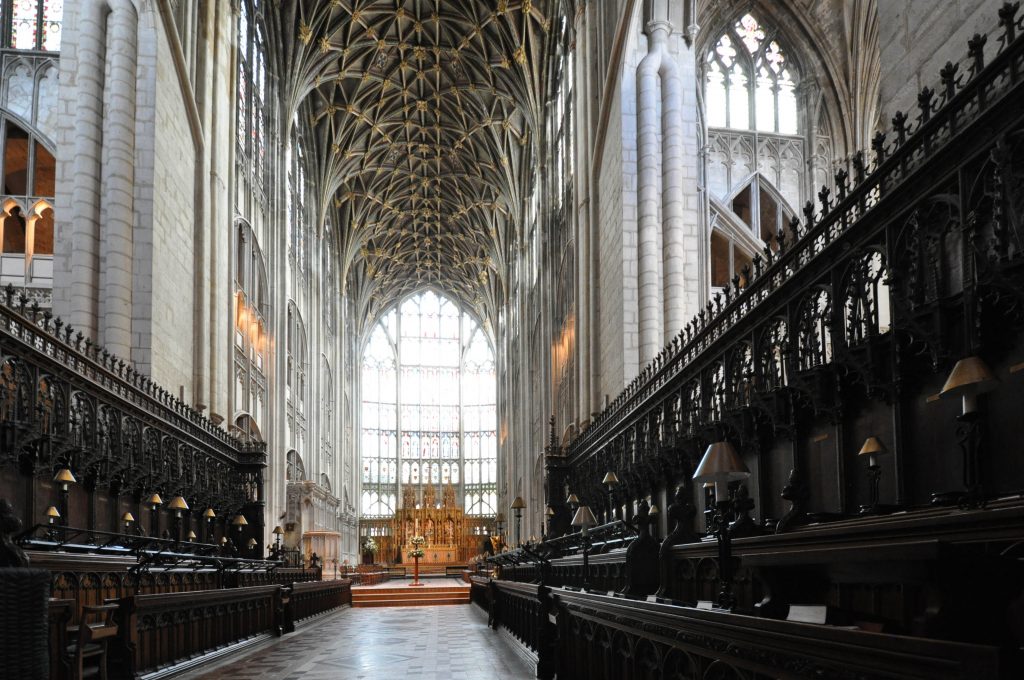
Gloucester Cathedral East End
Space, height and more space were the bywords of the Perpendicular style. The nave at York Minster was so wide that the vault had to be made of wood rather than stone.
To add light, the ‘four-centred’ arch gave us extended, often enormous, window apertures, many retro-fitted into Norman Cathedrals like Rochester.
A four-centred arch is an engineering marvel. It is effected by turning two steep, narrow arcs into one wide arch capped by a central point, with a much lower tension or springing point. Who says the late middle ages were primitive and unsophisticated? I bet schoolchildren didn’t have geometry sets back then, either.
There are no complete Perpendicular cathedrals, but chantries and tombs abound, slipped into earlier buildings—Winchester Cathedral boasts seven.
King’s College Chapel, Cambridge, was built between 1447 and 1515, and it’s considered a quintessential Perpendicular structure.
The verticality is so extreme that it’s hard to step back sufficiently to get a complete picture.
The fan vaulting, another feature of the period, in the cloisters at Gloucester Cathedral is breathtaking.
Further examples of exquisite fan vaulting can be found at Bath Abbey (1501–39), designed by Robert and William Vertuef, and King’s College Chapel in Cambridge by John Wastell.
Salisbury Cathedral’s towering spire, installed in 1330, was the pinnacle of the Perpendicular style (pun intended).
Perpendicular Gothic was unique to England; it didn’t appear in Europe or elsewhere in Great Britain, and it was the favoured style during the great Gothic Revival of the Victorian period, though there were strong proponents of the Decorated Gothic style prepared to slug it out with restorers.
Next post in the series: Dissolution and Decline


